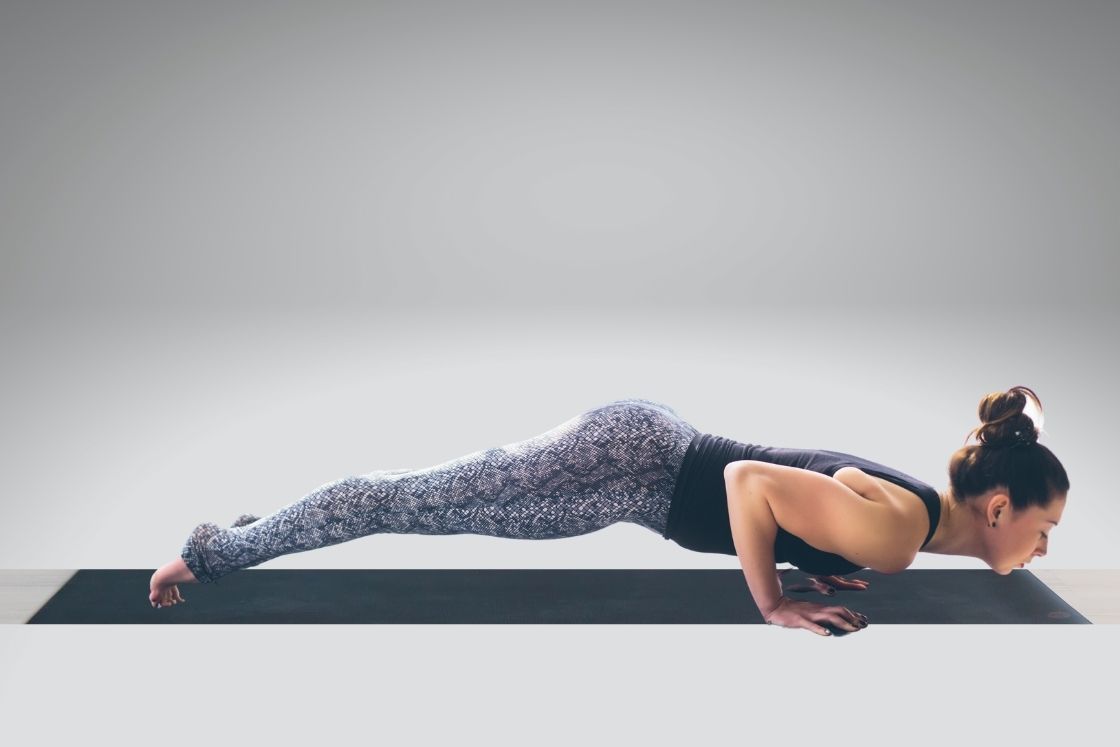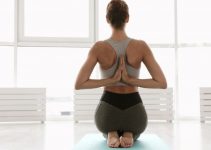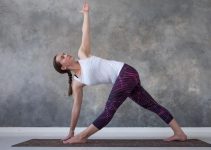
Nakrasana is an advanced pose of Asthanga yoga where the chaturanga dandasana meets with the dynamic body movements.
It is a restorative type of yogic posture performed on the prone position. Nakrasana involves dynamic movements requiring balance and strength.
It involves the stretching of abdominal muscles along with the chest, shoulder, neck, and spine. It leaves soothing effects on the nervous system gives rejuvenating effects.
Meaning and Interpretation
Nakrasana is a Sanskrit word with two root terms, ‘Nakar’ means ‘crocodile’ and ‘asana’ is ‘pose.’
Here, the body of the practitioner resembles the crocodile and its movements while stalking its prey, thus named as crocodile posture.
It is performed by lifting the body from the prone position and balancing it on the palms and toes. This is followed by a forward jump similar to the lunges made by a crocodile stalking its prey.
Nakrasana Practice Guide
Precautions & Contraindications
- Do not practice nakrasana during pregnancy, HBP, and neck or back injury.
- People with an exaggerated lumbar curve should also avoid nakrasana.
- Do not put the body under stress while holding the pose to feel the relaxation completely.
Preparatory poses
- Cat Pose (Marjari asana)
- Cobra Pose (Bhujangasana)
- Bridge Pose (Sethu Bandhasana)
Steps
- Lie down in the prone position with your face downwards.
- Place the palms by your sides keeping the elbows bent.
- Spread your legs keeping a separation of one foot.
- Exhale, raise your body off the floor keeping only the palms and toes to the floor.
- Balance the body on your palms and toes and stay there for a few breaths.
- As you exhale lift the hands and legs off the floor simultaneously diving a foot forward.
- Again maintain the position on palms and toes, and take a few breaths.
- Repeat the forward diving for 4-5 times maintaining the position for few breaths after each lunge.
- Then, reverse the movement by jumping backwards with exhalation.
- Continue driving until you reach the initial position.
- Bring you body to the floor keep your hands by your side.
- Rest your trunk on the floor and relax.
Beginner’s Tips
- Do not fall asleep while holding the pose as it might be a beginner’s tendency. It is so because it is a relaxation asana that is performed at the end of the yoga session.
- Yoga Block – Perform nakrasana by placing a yoga block underneath your head. Rest your hands over it and then stack your head on them. This helps in maintaining the level of the head.
Follow up poses
- Bow pose (Dhanurasana)
- Corpse pose (Shavasana)
- Camel pose (Ushtrasana)
- Child’s pose (Balasana)
Variations
- Deeper crocodile pose- After attaining nakrasana raise your legs by bending the knees and drawing the heels towards you. Stretch your arms and try to lift your torso.
- Locust pose- From the nakrasana stretch your arms forward keeping them straight. Draw your down to the floor with the ears parallel the arms and let the palms face each other. Finally, lift the legs off the floor at a 60° angle. Hold the final pose.
- You can also practice nakrasana by placing the hands on opposite shoulders and placing the head between the arms and chest.
Benefits
1. Rejuvenates the body
Nakrasana helps to relax the shoulders, spine, and relieves the entire body. By relaxing and releasing all the tight knots in the body it relieves fatigue and leaves the practitioner with a rejuvenated body.
2. Cures lung disorders
The pose involves deep slow breathing. It improves the lungs’ efficiency and capacity. This helps to cure pulmonary disorders like asthma. Patients suffering from chronic obstructive pulmonary disease (COPD) get remedial effects from nakrasana [efn_note] Effect of Adjuvant Yoga Therapy on Pulmonary Function and Quality of Life Among Patients https://www.researchgate.net/publication/327793102_Effect_of_Adjuvant_Yoga [/efn_note].
3. Sacrum activation
The pose involves the hip flexing that contracts the muscles around the sacrum. Thus, it also stimulates the sacrum facilitating breathing throughout the spine. it helps in clearing all the blockages.
4. Improves digestion
Nakrasana is practiced in the prone position with deep breathing. It massages the abdominal organs and improves the functioning of the digestive system. Also, helpful in curing constipation.
5. Overcomes stress and anxiety
This relaxing pose soothing effects on the brain. It activates the parasympathetic nervous system that helps in preventing stress, anxiety, and mental disorders [efn_note] Effect of Yoga On Anxiety Score http://njirm.pbworks.com/w/file/fetch/52954916/32Effect%20Of%20Yoga%20On% [/efn_note].
6. Maintains blood pressure
The pose stimulates the diaphragmatic breathing by activating the diaphragm muscles. It regulates blood flow and oxygen intake. It brings the blood pressure under control and reduces the load on the heart.
7. Therapeutic action
Nakrasana is beneficial in healing spinal issues. It cures slip disc, spondylitis, and sciatica. It keeps the practitioner away from backache or lower back stiffness [efn_note] Yoga exercises for lower back pain https://yoga-sci.eu/wp-content/uploads/2014/06/6-romanov-radak-e.pdf [/efn_note].
Conclusion
Start practicing nakrasana to feel rejuvenate and refreshed throughout the day. Involve this advanced level pose into your workout regimen for the various health benefits that it offers the practitioner.




